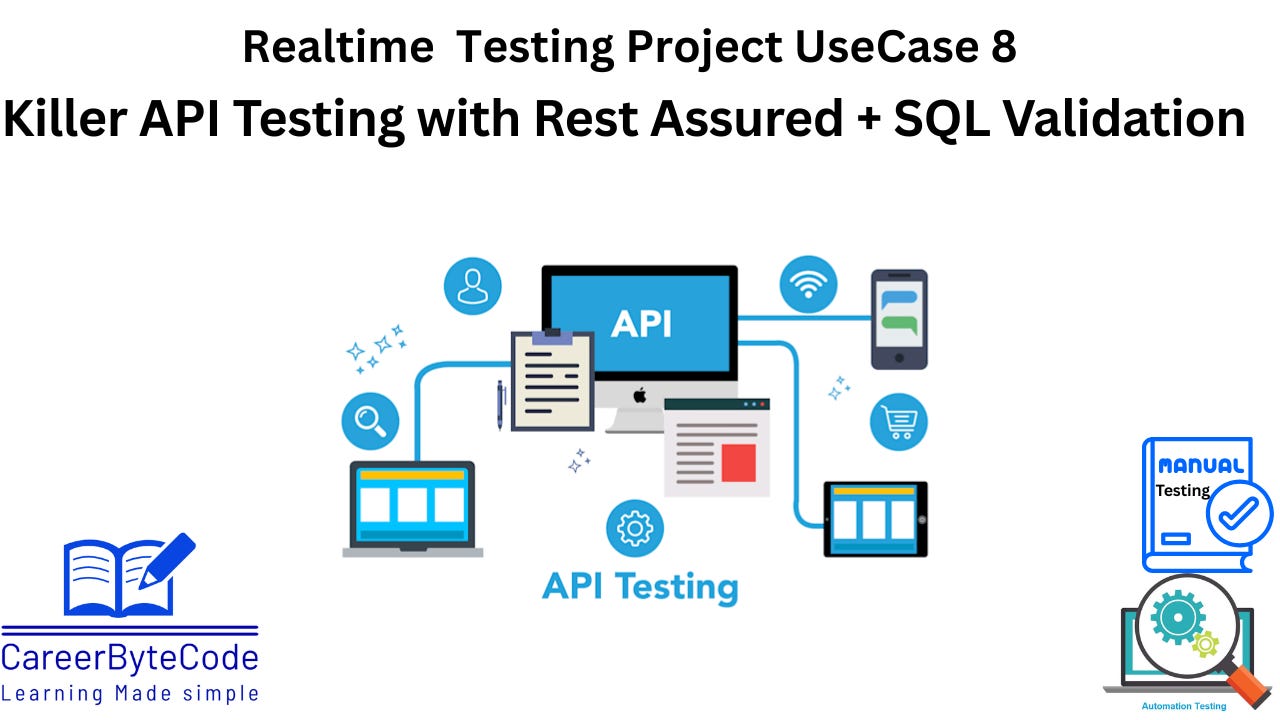End-to-End Backend Automation with Assertions for User Management CRUD APIs
Zero-Bug Deployments: Backend CRUD API Testing with Rest Assured
1. Problem Statement
Client wants to ensure backend APIs for user management are working as expected after each build.
Scenario:
You have a user management backend with CRUD APIs. Need to automate verification of POST → GET → PUT → DELETE operations.
Approach:
Write a Rest Assured test suite for all CRUD operations.
Use SoftAssert to validate:
Status codes
Response bodies
DB confirmation using SQL Server
Sequence the tests in a chain to simulate real-world usage.
Report consolidated results via TestNG or Allure reports.
Tools or Services to be Used:
Rest Assured, SQL Server, TestNG, Java
2. Why We Need This Use Case
In modern software delivery pipelines, backend APIs are at the core of application functionality. They handle critical business logic, database interactions, and serve data to front-end applications. If these APIs break, the entire system can fail — impacting customers, revenue, and brand trust.
This use case ensures user management backend APIs are tested automatically after every build, so issues are caught before they reach production. By automating CRUD (Create, Read, Update, Delete) verification, integrating database validations, and using SoftAssert for multiple assertion checks, we can simulate real-world usage patterns.
With every deployment, this automated suite:
Validates HTTP status codes.
Checks API response payload accuracy.
Confirms database changes via SQL queries.
Generates detailed test reports for quick debugging.
This proactive approach prevents manual testing delays, reduces human error, and ensures continuous quality in a CI/CD workflow.
3. When We Need This Use Case
You should implement this use case in scenarios like:
Post-Build Verification – Automatically run API tests after every successful build.
Regression Testing – Validate that new code changes don’t break existing API functionality.
Database Migration – After database changes, ensure API operations still behave correctly.
CI/CD Pipelines – Integrate into Jenkins, GitLab CI, or Azure DevOps pipelines for continuous validation.
High-Traffic Applications – Apps where even small backend issues can cause large-scale failures.
Example: Imagine a banking application where adding, updating, or deleting a user must always be correct. A single missed bug could allow incorrect account data, leading to compliance violations. This suite acts as a safeguard.



